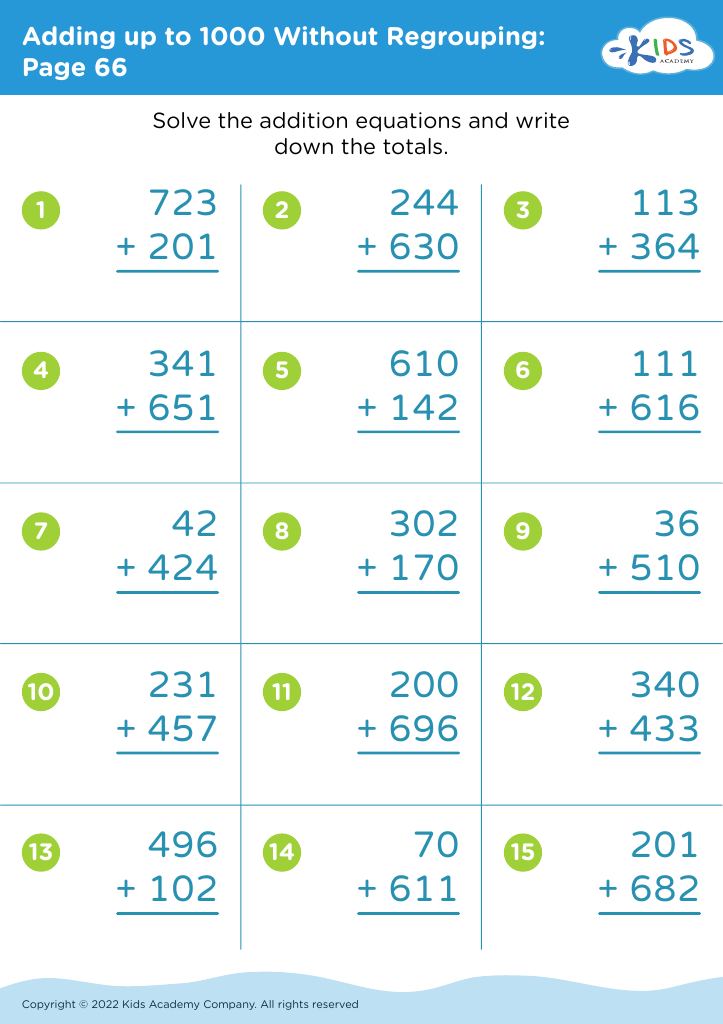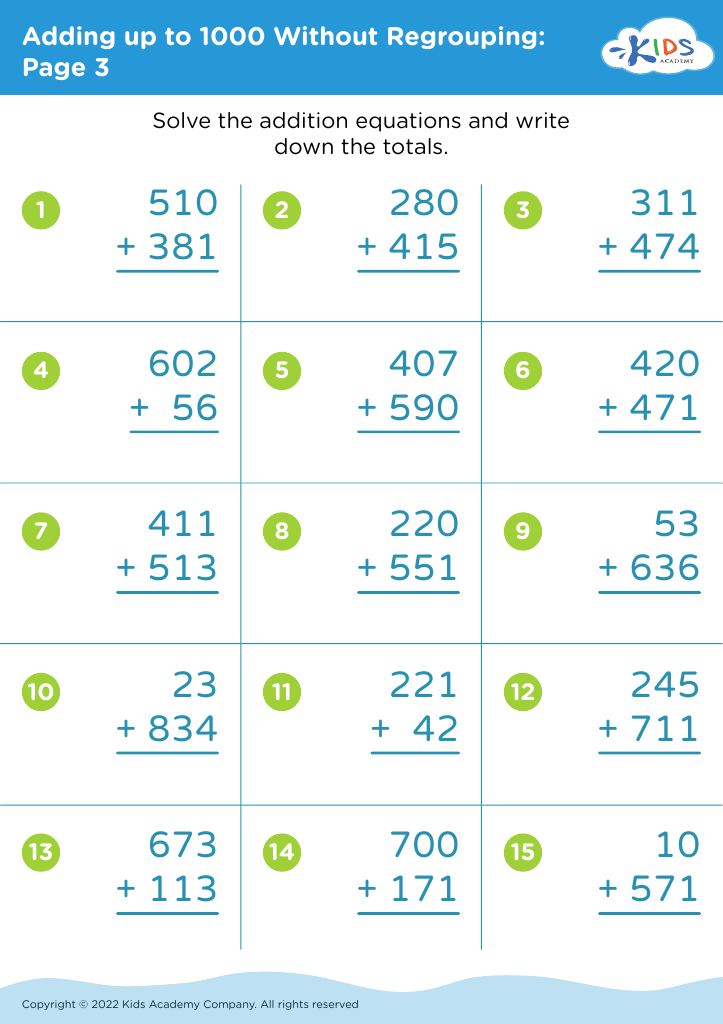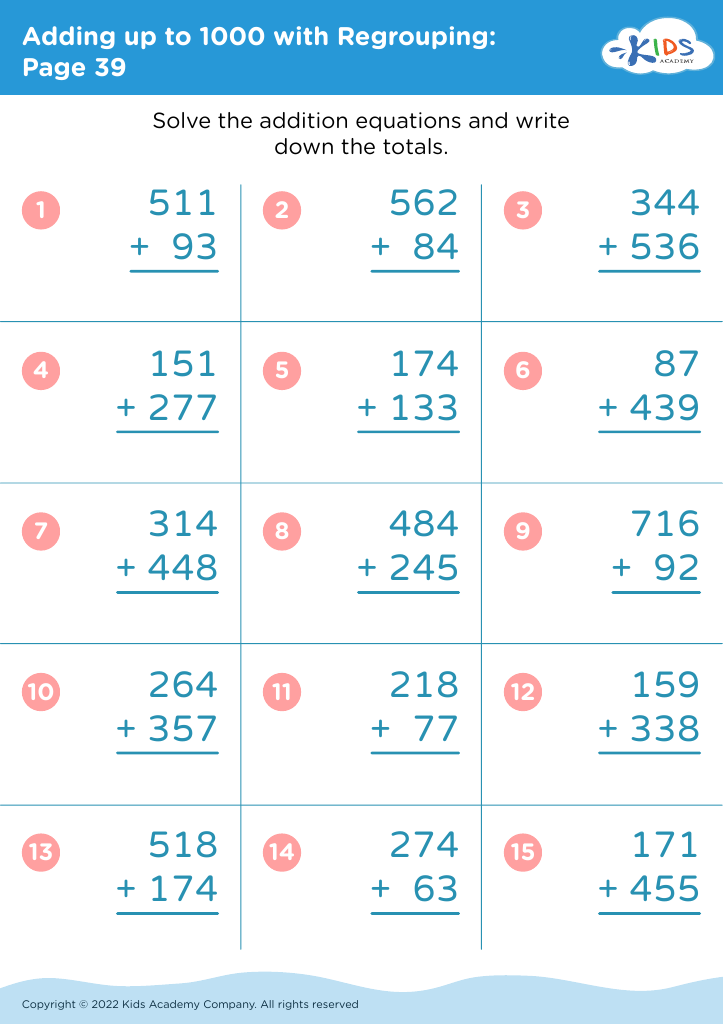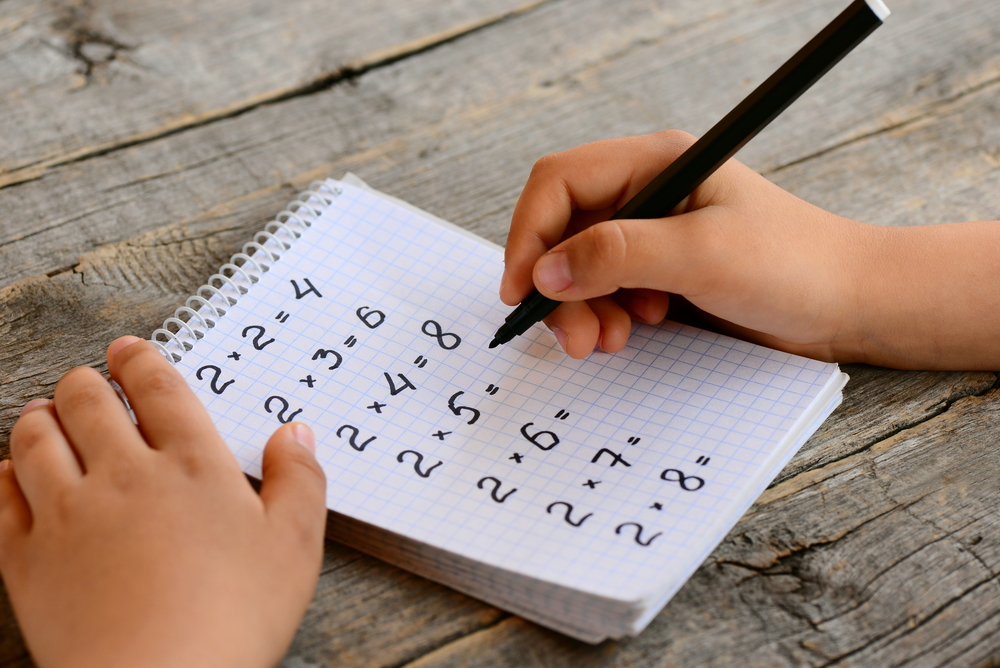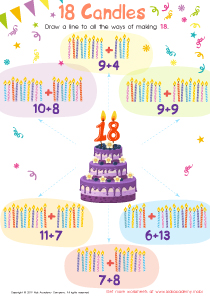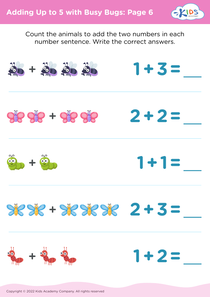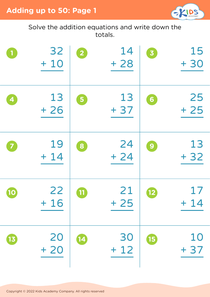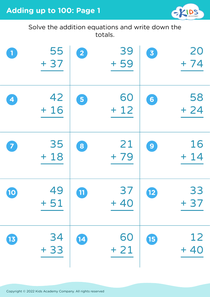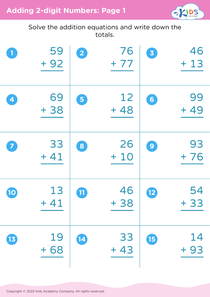Recognize shapes Adding up to 1000 Worksheets for Ages 7-8
4 filtered results
-
From - To
Explore our engaging "Recognize Shapes Adding up to 1000 Worksheets" designed specifically for ages 7-8! These comprehensive worksheets help young learners identify and understand various shapes while practicing their addition skills up to 1000. With colorful visuals and interactive exercises, students will enjoy a fun, hands-on approach to mastering geometry and basic math concepts. Each worksheet is tailored to build confidence in recognizing different shapes and improving their ability to solve addition problems. Perfect for homeschoolers and classroom settings alike, our materials foster a love for learning while ensuring a solid foundation in essential math skills. Get started today!
Recognizing shapes and understanding their properties is a foundational skill for children aged 7-8 that significantly enhances their mathematical learning and cognitive development. At this age, children begin to transition from basic level calculation to more complex concepts, including the idea of spatial reasoning and geometry. When parents and teachers emphasize shape recognition, they provide children with the tools to identify and categorize geometric shapes, and understand how these shapes fit into the world around them.
Understanding shapes helps children develop problem-solving skills, critical thinking, and the ability to visualize spatial relationships—abilities that are essential in higher-level math. Furthermore, when children learn to add shapes, as in the concept of adding up to 1000, it enhances their number sense and arithmetic skills, merging geometry with basic arithmetic. This kind of integration of subject areas fosters a deeper understanding of mathematics overall.
Additionally, recognizing shapes can promote engagement and enthusiasm in learning. Creative activities like building with blocks, art projects, and engaging math games can make the learning experience more enjoyable. Ultimately, when parents and teachers nurture shape recognition and its relationship to numbers, they empower children to build a solid foundation for future mathematical success.

